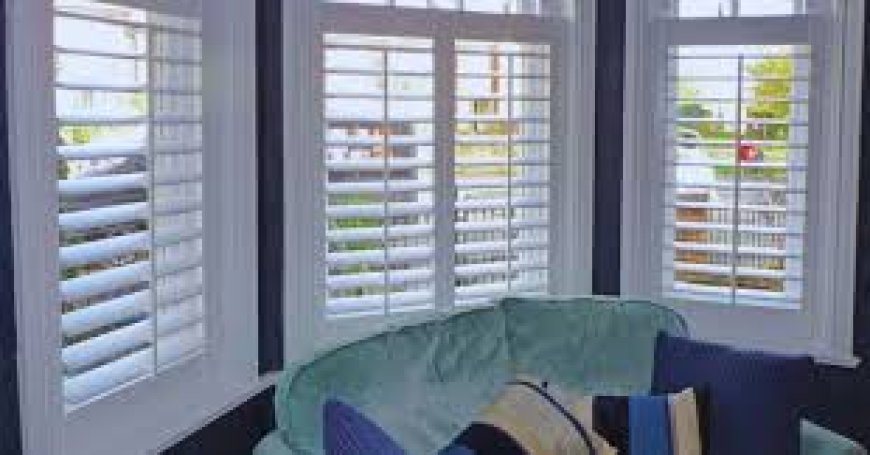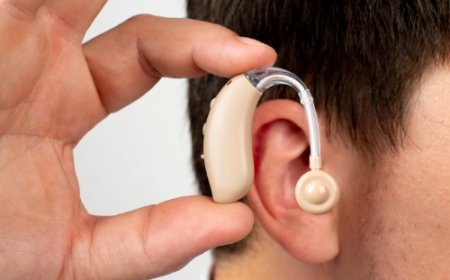What’s the Difference Between PVC & Wooden Plantation Shutters?

Plantation shutters have quickly won over homeowners looking for a window treatment that blends good looks with privacy and day-to-day practicality. Their classic lines suit almost any room style, and the sturdy slats control light while adding a bit of insulation. Still, the biggest choice you face when ordering them is whether to go with PVC or real wood.
Each material brings its perks and trade-offs to the table. Knowing how they differ will help you pick the option that matches your budget, local weather, and personal taste.
Material Composition and Appearance
The clearest divide between the two types is what they are made of and how that affects their looks.
PVC (short for polyvinyl chloride) shutters are built from a durable synthetic plastic, often stiffened inside with a thin metal channel. The result is a smooth, even surface that pretends to be painted wood without the knots or warps.
Real-wood shutters come from actual boards of basswood, poplar, cedar, or similar timbers. You can see the genuine grain and subtle color variations, and you may paint or stain them to match or contrast with any decor.
If what you want is a warm, upscale vibe, real wood tends to win. On the other hand, PVC gives a sleek, tidy look that blends well with modern spaces.
Durability and Longevity
How long your shutters hold up is obviously important. PVC plantation shutters shrug off dampness, steam, and heat, so they fit kitchens, bathrooms, or laundries perfectly. They resist cracking, chipping, or fading, and you wipe them down instead of sanding or repainting.
Wooden shutters are tough, but water loves to test them. Without good seals and regular attention, humidity can make them swell or warp over the years. Yet in dry places like bedrooms and sitting rooms, well-kept wood lasts decades and remains stable.
For shower rooms or coastal locations, PVC usually makes the most sense.
Weight and Installation
The heft of the material influences how easy the job is and how long it stays straight.
PVC tends to weigh more than wood thanks to its solid core and extra bracing. On large windows or doors, that extra mass can stress hinges and frames over time.
Because wood shutters weigh less, putting them up and moving them around is straightforward. That lighter build also spares hinges from extra strain, so they suit wide windows and busy spots better.
If you plan to install broad panels that you open often, wood shutters will feel easier to operate day after day.
Insulation and Energy Efficiency
Both wood and PVC plantation shutters insulate, yet their performance differs slightly.
Timber is a natural heat barrier, so wood panels help even out room temperatures. They guard against winter chill and summer heat, which can trim energy bills.
PVC also insulates well when each panel seals tightly. Still, top-grade timber usually edges it in raw thermal performance.
In homes that track energy use, wood may have a small advantage, but well-fitted PVC still scores high.
Maintenance Requirements
PVC shutters require hardly any upkeep. A quick wipe with a damp cloth is all they need; there is no sanding, painting, or sealing. Because they shrug off moisture and UV rays, they stay looking good with very little effort.
Wooden shutters call for a little extra care. You can still dust them with a soft cloth, but over time, they usually need a fresh coat of paint or stain, especially when harsh sun or swinging temperatures keep knocking on the door. For plenty of owners, that small chore is a fair trade for the warmth and character real wood brings.
Cost Comparison
PVC shutters sit on the friendlier side of the budget. They mimic the look of wood at a lower price, which makes them a go-to for wallet-watching homeowners or anyone trying to dress several windows at once.
Wood versions, by contrast, start higher because good timber and skilled hands rarely come cheap. Still, they reliably bump up a house's resale appeal and are often labelled as a high-end finish.
If tight funds are top of mind, PVC strikes a solid mix of style and function. But if you want to park your cash in a long-lasting visual upgrade, wood could justify the jump.
Conclusion
Both PVC and wood plantation shutters bring their flair, so the best pick hinges on your climate, routine, and personal taste.
Pick PVC for bathrooms, easy upkeep, and value that won't break the bank.
Choose solid wood when you crave natural charm, better insulation, and a trim that feels delightfully light.
Whichever style you pick, plantation shutters sit nicely in almost any room and lift your home's look and everyday usefulness for a long time.
What's Your Reaction?




























































